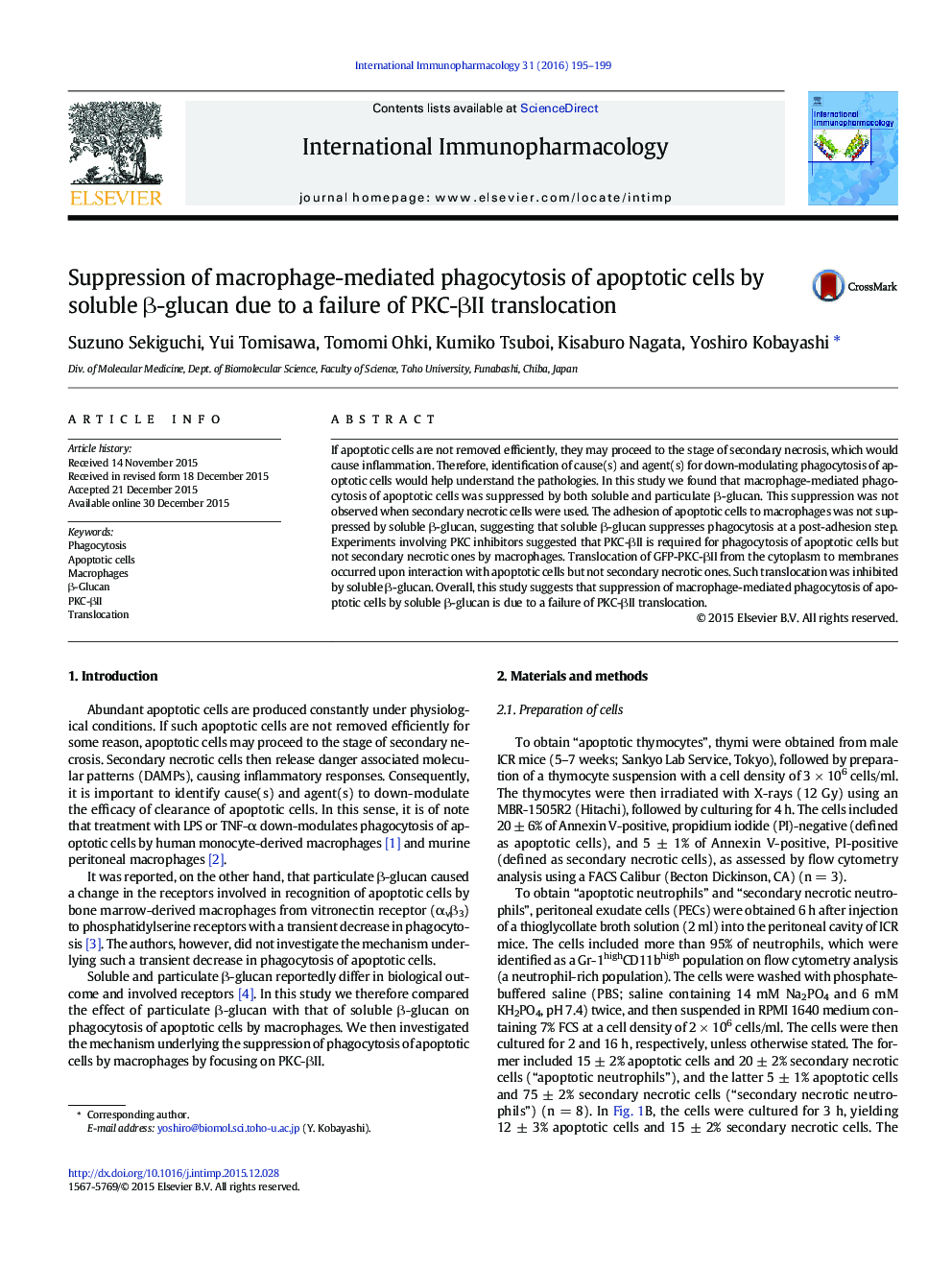| Article ID | Journal | Published Year | Pages | File Type |
|---|---|---|---|---|
| 5831905 | International Immunopharmacology | 2016 | 5 Pages |
â¢Phagocytosis of apoptotic cells was suppressed by soluble and particulate β-glucan.â¢Phagocytosis of secondary necrotic cells was not suppressed by soluble β-glucan.â¢Apoptotic cells induced PKC-βII translocation from the cytoplasm to membranes.â¢PKC-βII translocation was inhibited by pretreatment with soluble β-glucan.
If apoptotic cells are not removed efficiently, they may proceed to the stage of secondary necrosis, which would cause inflammation. Therefore, identification of cause(s) and agent(s) for down-modulating phagocytosis of apoptotic cells would help understand the pathologies. In this study we found that macrophage-mediated phagocytosis of apoptotic cells was suppressed by both soluble and particulate β-glucan. This suppression was not observed when secondary necrotic cells were used. The adhesion of apoptotic cells to macrophages was not suppressed by soluble β-glucan, suggesting that soluble β-glucan suppresses phagocytosis at a post-adhesion step. Experiments involving PKC inhibitors suggested that PKC-βII is required for phagocytosis of apoptotic cells but not secondary necrotic ones by macrophages. Translocation of GFP-PKC-βII from the cytoplasm to membranes occurred upon interaction with apoptotic cells but not secondary necrotic ones. Such translocation was inhibited by soluble β-glucan. Overall, this study suggests that suppression of macrophage-mediated phagocytosis of apoptotic cells by soluble β-glucan is due to a failure of PKC-βII translocation.
